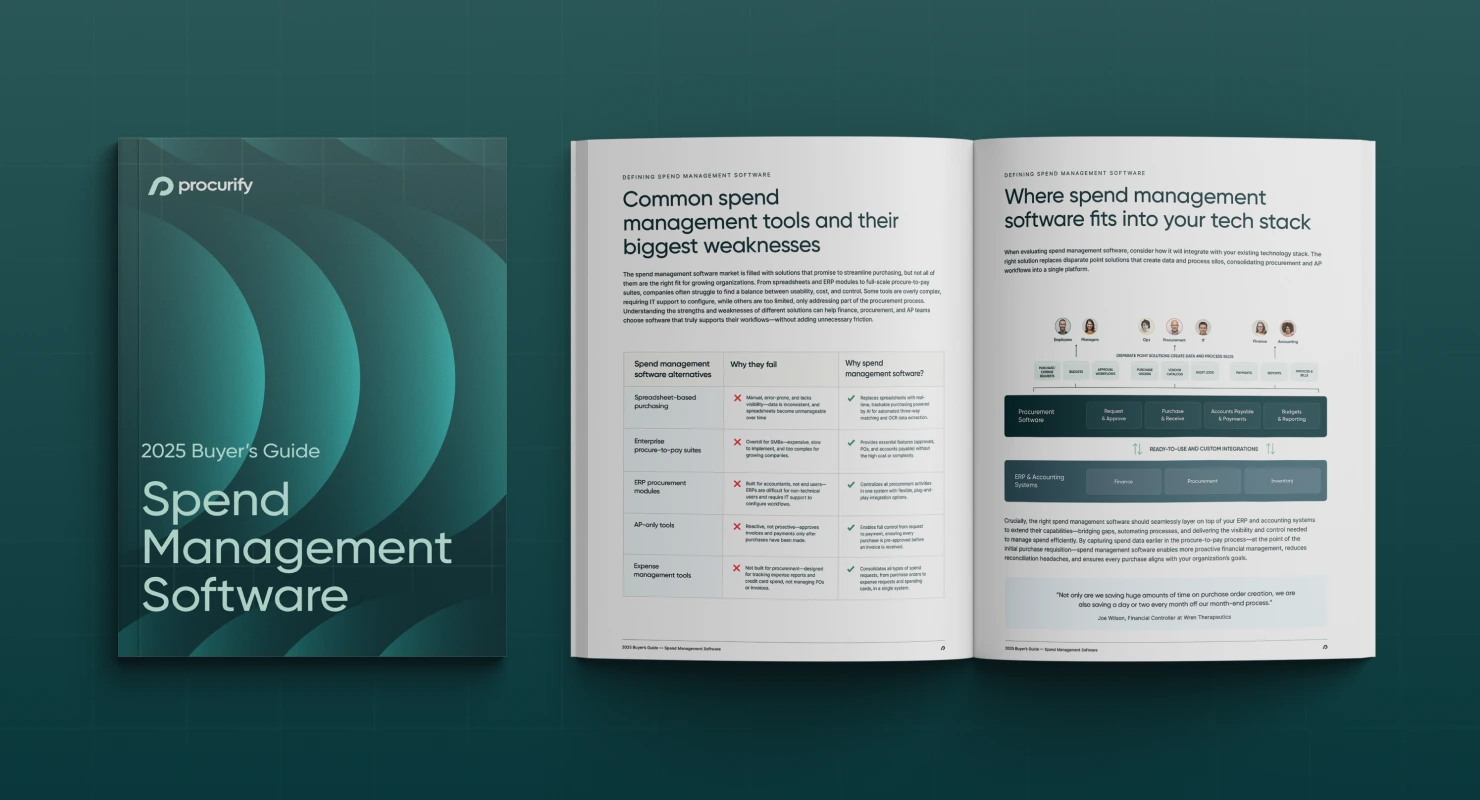Procurement and Contract Management Horror Stories With Daniel Barnes
In this episode of Spend Culture Stories, Daniel Barnes chats with us on procurement and contract management horror stories he’s seen throughout the years, and how to combat the biggest blockers to procurement efficiency. In addition, we chat about how procurement leaders can build a personal brand, and how to communicate the value of procurement in organizations.

Speakers: Daniel Barnes, Founder of The World of Procurement
Daniel Barnes is an independent commercial, procurement, and supply chain consultant that specializes in driving cost savings and adding value to your business. He is also the producer & host of the World of Procurement podcast – talking about all things procurement, supply chain, and contract management. His website, World of Procurement also provides procurement and supply chain content, tips, and thought leadership for the procurement profession.
Listen to the Episode Here:
Listen to Spend Culture: Stories of CFOs and Company Culture
Notable Quotes:
Why do you think procurement is one of the slowest moving roles for change management? What is the thing that keeps people behind?
Resisting Technology and Automation as A Leader
I’ve been thinking about this, and it’s really hard not to come across as ageist in the response. But I’m going to give but I think it’s the most straightforward and honest answer that I can give here. There are plenty of businesses around the world that have got this right, but there are many that haven’t. There are many that still do very manual things around procurement, whether it’s manual purchase orders or that data management is crap, or they just have bad contract management. All of this can be partially automated, partially in cloud storage processes, and workflows can be built by a software technology now.
And when I look at the leadership team, it’s not necessarily just the chief procurement officer’s problem. Or the Director of Commerical Supply Chain, SVP, or whatever the title is. When I look at the entire team, there’s something about them that struggles with the most basics of technology as it is within the business. I’ve seen procurement managers, senior procurement executives, and commercial managers all have this problem. You can’t even set up an outlook invitation because they might not have a clue how to use it. And when you’re at that stage, there’s no way you are ever going to grasp the technology that’s out there in this space.
Not Seeing the Potential Value in Procurement Change Management
However, on the flip side, it’s not just that I think sometimes businesses don’t see the value in procurement change management. They don’t see the need to do it if things are always what the way they are, and maybe they just can’t really see the benefits that they’re going to get, whether immediate benefits or long term benefits. I think there’s a whole piece around that. And on the flip side, I didn’t think necessarily that all the companies out there that have solutions that can enable change, that I don’t think they necessarily do a good job of showing what that change can be.
What’s a procurement horror story you’ve seen in your career?
Using Only One Supplier for a Multi-Million Project
It’s a more recent one in the last couple of years, and it won’t necessarily sound like a true horror. There was no catastrophe. But I think it says a lot about the mindset, the influence in businesses around what procurement can actually do. So I was working with a client and they wanted to procure some, let’s call it electronic warfare components. Let’s keep it like that. They were looking to spend about four, four and a half, maybe five million pounds on this. This is a fairly substantial spend, especially on the direct program, accounting for a lot of the spending. They had a supplier in mind. They haven’t used the supplier ever, but they had been in conversations with one supplier, and one supplier only for about five years. I came in, and I thought this was absolutely crazy. But this wasn’t the craziest part.
So I decided to go to speak to the guys who are going to use this and build the product, the guys that know what they’re talking about, the technical experts. And typically procurement supply chain folks, they don’t have always the best of relationships with their internal stakeholders, especially those technical people, because they’re the nerds, the geeks that they like to get everything their way.
Misalignment and Lack of Cross-Functional Teamwork
So I walk in and I grab a cup of coffee and a few biscuits with the technical guys. And I say, ‘what’s going on here?’ And they say that the product is shit. It’s horrible but no one will listen to us. They’re adamant that that product will do it. But we’ve got modeling on our computer that it won’t work, that it won’t give us the power output, the frequencies that we need, blah, blah, foreign technical stuff. So I had to stop battling this because I trust these guys. Like, that’s what you have to do when you walk in.
I went speak with the VP of Commercial Contracts and these guys are telling me that this is going to be rubbish, this can be a disaster. You’re going to fail upstream because you’re not going to deliver the product to the customer that you need. He just looks at me along with the whole program team, as though I’m crazy, and I go and tell that we’re not going with the supplier they’ve chosen and that we’re going to competitively procure this.
Lack of a Proper Supplier Evaluation Process
So, we did a proper actual evaluation because none of this had been done. Long story short, though, we got the right products in significant savings. Seven hundred thousand nine hundred thousand pounds. Better products, better quality. The disaster is the mindset that you can just go to a supplier. This is too big of an organization that you can just go to a supplier and simply say we want this, and they deliver upfront. And that kind of blew my mind. The fact that a big organization would ever be in that position and that people wouldn’t listen to the technical experts. So then, I had to build a relationship with the experts on the procurement side, and then fight with the technical experts – it was crazy.
But it worked out in the end. There are instances like that in the world which, you know, as a procurement professional, you will come across where you’re in a situation where it makes no sense what the strategy is. You’ve got to fight some battles and influence people and do it in the proper way, for example, showing evidence, data, building all the data sources from the internal teams to show this product doesn’t work from a technical perspective.
How do you think procurement leaders can lead the organizations in creating better and healthier spend cultures? How can they be the pioneers in this movement?
Leadership Should Have a Long-Term Vision
Yeah, I mean, I think that’s where the magic is. I think from a leadership perspective when I look to a leader, they need to firstly have a clear vision. You find so many people in senior roles that just bumble and fumble along. They don’t really know the day to day, they are simply consumed in emails – they don’t have a vision.
There’s a common misconception from other leaders the company that procurement has always been there to save money. Obviously, procurement is so much more than just that. I think you need strong leadership, strong vision, and you need that lead to be able to get the right people on board with that vision and drive it through. Because within organizations, you’ve got to people who want to be there, instead of people who were just want to get paid or people who are there for retirement, and people who are looking to improve their skills in the short term to jump to somewhere bigger and better for them.
Be Aware of the Problems in the Organization and Hire the Right People to Navigate Them
The people side is a really hard bunch to get working in unison. So you need a really strong strategic vision, a vision that people buy into. Not everyone, but those people are strong enough to push the culture along. And I think that’s an area which is going to become more and more important moving forward.
We’re already in a global recession, and money is going to be hard to come by. Cash flow is going to be hard. Suppliers are likely to start choosing the client rather than the other way around. If you are a bad person, a bad buyer, that’s going to really impact your ability to work within your supply chain. So I think there’s a lot of other things that are going to become more prevalent that already in play and they’re only going to get stronger and more difficult to navigate. And if you don’t have a good leadership team that is aware of all these problems and have the right people in place to navigate them, what have you done, really?
This interview is taken from an episode of the Spend Culture Stories podcast.
That’s not all, folks
If you’re interested in hearing more stories from procurement business partners like Maria, you may enjoy these Spend Culture episodes:
- Nakita Gates of Executive Search Recruit on how to hire your first procurement executive
- Anthony Clervi of Una on how CEOs can empower procurement and sourcing heroes
- John Evans of Procureability on how high growth startups can best create their first procurement strategy
For more tips on streamlining procurement processes and spend management:
- The Best Procurement Software
- 6 ways procurement can get ahead of a recession
- 4 procurement KPIs you should know immediately
Subscribe and help us grow:
Did you enjoy the podcast? Subscribe to the Spend Culture podcast on Spotify, Apple Podcasts, or wherever you listen to podcasts. If you have an extra 10 seconds, please leave us a rating or review to help us grow. Have recommendations for future podcasts? Contact our host at dani.hao [at] procurify.com.

2025 Spend Management Software Buyer’s Guide
Choose the spend management solution best suited to your organization’s needs with an overview of the 2025 software ecosystem, feature comparisons, and a free vendor capability evaluation checklist.
